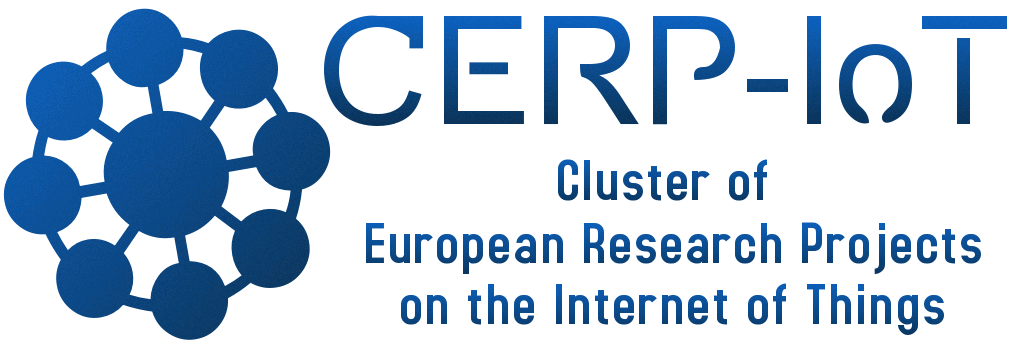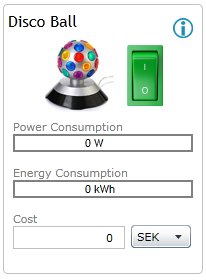Projects using Hydra
A large number of EU funded projects are now using the Hydra (or LinkSmart) middleware. Some projects are using the middleware for new applications and new devices. Some projects are augmenting the middleware with new functionality.
Below is a list of the projects we know of. If your project is using Hydra or LinkSmart middleware, please let us know.
Below is a list of the projects we know of. If your project is using Hydra or LinkSmart middleware, please let us know.
 |
REACTION The aim of the REACTION project is to develop an integrated ICT platform that supports improved long term management of diabetes based on wearable, continuous blood glucose monitoring sensors and automated closed-loop delivery of insulin. The REACTION platform will present an interoperable peer-to-peer communication platform based on Service Oriented Architecture (SoA) using cloud-enabling midddleware. It will feature a Model Driven Application Development environment based on extensive use of dynamic ontologies. Sensors will be included using the Hydra middleware. REACTION is a Integrated Project with 15 partners. It started in 2010 and is funded under FP7 in the area of Personal Health Systems. website: www.reaction-project.eu |
| inCASA The inCASA project aims to create and demonstrate citizen-centric technologies and a services network that can help and protect frail elderly people and prolong the time they can live well in their own homes. The goal will be achieved by a series of pilots across Europe that integrate solutions and services for health and environment monitoring in order to profile user behaviour. Data will be made available to professional care service providers including privacy protection; day-by-day activity planning; co-ordination of Public Social and Health Care Services; and deployment of specialist community based services. inCASA is a 30-months project funded by the European Commission under the CIP-PSP programme. It started in 2010. website: www.incasa-project.eu |
|
 |
ebbits The ebbits project does research in architecture, technologies and processes, which allow businesses to semantically integrate the Internet of Things into mainstream enterprise systems and support interoperable end-to-end business applications. It will provide semantic resolution to the Internet of Things and hence present a new bridge between backend enterprise applications, people, services and the physical world. The ebbits platform features a Service oriented Architecture (SoA) based on open protocols and Hydra middleware, effectively transforming every subsystem or device into a web service with semantic resolution. ebbits is a Integrated Project started in 2010 and runs for 4 year. It is funded under FP7 in the area of Internet of Things and Enterprise environments. website: www.ebbits-project.eu |
 |
The MASSIF project aims at developing a new generation Security Information and Event Management (SIEM) framework for monitoring and predicting security relevant incidents. The SIEM framework will be demonstrated in the scope of complex and security-critical systems like the Olympic Games IT infrastructure, a mobile money transfer system, managed enterprise services and critical infrastructures. MASSIF will leverage LinkSmart's context-aware security and event processing capabilities.
MASSIF is a 3-year STREP funded under FP7 in the area of Trustworthy ICT. website: www.massif-project.eu
|
 |
SEEMPubS SEEMPubS aims at reducing energy usage and CO2 footprint in existing public buildings and spaces without significant construction works by introducing intelligent energy consumption monitoring and control. Based on the LinkSmart Middleware, the SEEMPubS platform will provide control of appliances to effortlessly optimize energy efficiency without compromising comfort or convenience for end-users. The SEEMPubS platform will be applied in public and historic buildings reusing already existing infrastructure where possible and introducing new technologies where necessary. SEEMPubS is a 3-year STREP, launched in 2010. It is funded under FP7 in the area of Energy-efficient Buildings. website: http://seempubs.polito.it/ |
| SEAM4US SEAM4US will develop a cross-disciplinary technological and methodological framework to significantly reduce energy consumption of underground transportation systems. The project will address both, the creation of systems for optimized integrated energy management and the decision making involved in mid-term investments. SEAM4US combines additional energy metering and sensor-actuator networks with other existing systems (e.g. surveillance, passenger information and train scheduling), by means of middleware as abstraction layer, to acquire grounded user, environmental and agent-based scheduling models. The project aims at effectively reducing the energy consumption of the subsystems by 5% - 10% in real-world pilot conditions (metro station in Barcelona). SEAM4US will start as a 3-year STREP in October 2011. It is funded under FP7 in the area of Energy-efficient Buildings. |





 The Hydra project is co-funded by the
The Hydra project is co-funded by the 


